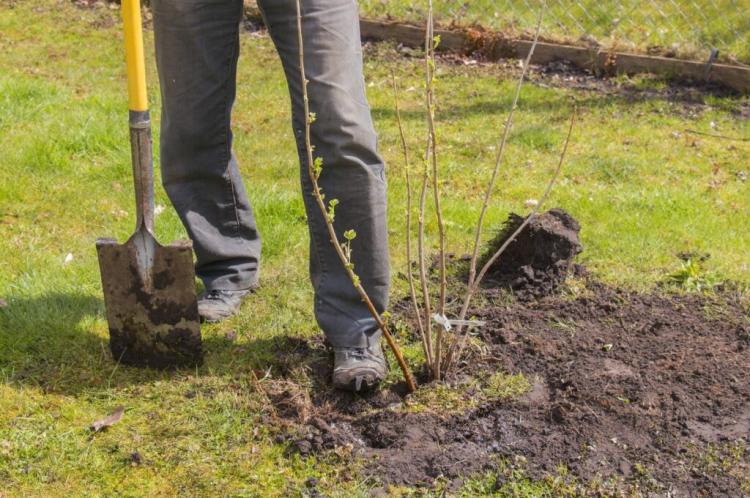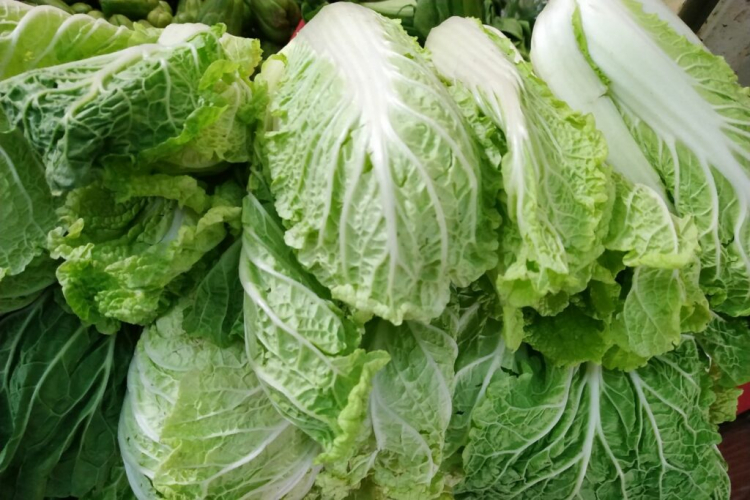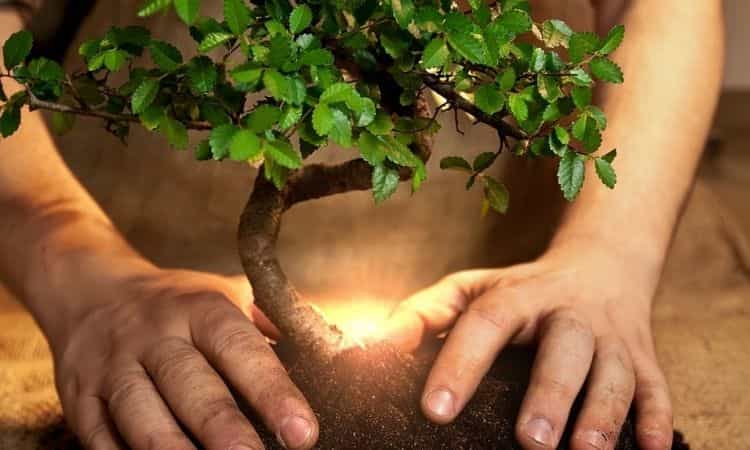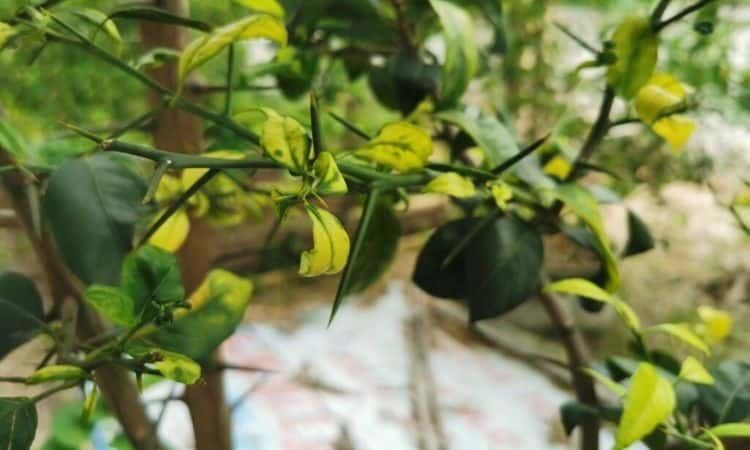Growing Blackberry: Video Instructions & Tips
With blackberries, too, planting is the cornerstone of a successful harvest. We will show you what to consider when growing blackberries.
The blackberry ( Rubus fruticosus ) is a popular climbing shrub in the home gardens. Even our ancestors from the early Stone Age knew about the culinary benefits of these sweet fruits. The wild blackberries literally make the harvest with their many thorns “doom”. Thanks to thornless cultivations, the fruits are now ideal for snacking in many gardens from June to October.
The blackberry is relatively undemanding to cultivate. If you already consider a few aspects when planting, you can enjoy a healthy blackberry plant with plenty of fruit for a long time. We have summarized the most important points for you.
Buy blackberry plants or propagate them yourself
Table of Contents
Planting wild blackberries in the garden should be carefully considered because later removal is often only possible with great effort. Buying specially bred blackberry varieties turns out to be the better option here, as the cultivated forms reproduce far less by themselves than their wild relatives. You can almost always buy blackberries from specialist gardeners with a pot ball so that they can be planted practically all year round.
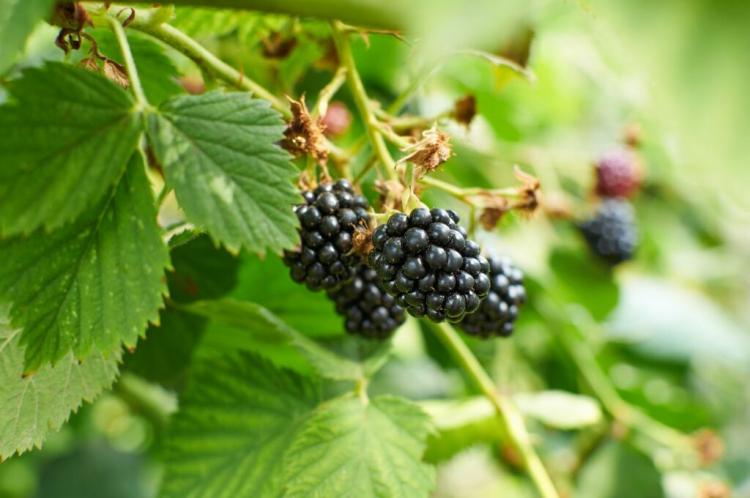
If there are already blackberry plants in the garden, you can propagate them yourself with relatively little effort using cuttings, sinks, or runners. There are now even excellent thornless varieties that make care and harvesting easier.
The right time to grow the blackberry
Blackberries are best planted in autumn from September to October, as the bushes sprout in early spring. If you do not want to grow until spring, this should be done as early as possible, but no later than March or April.
You might so like: Barberries Plant: Caring And Planting For The Wood
The perfect location for planting blackberries
Once you have acquired a sufficient number of blackberry plants, you must first find the right location. Fortunately, the blackberry makes little demands on the soil. In its natural environment, the blackberry grows on heavy, nutrient-rich soils. The pH value of the soil should be around 5 and thus tend towards a slightly acidic environment. The blackberry also prefers a sunny and sheltered spot. Winter protection is recommended in cold winter areas (below -15 ° C).
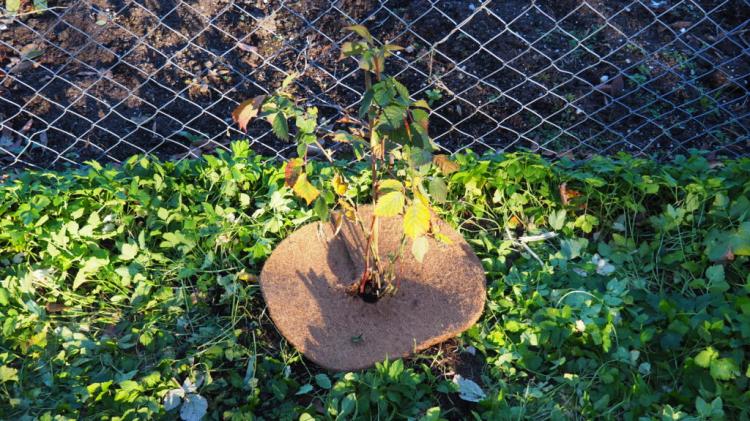
The correct procedure for growing blackberries
Blackberries are basically self-fertile. However, the fruit set is better if several shrubs of different varieties are planted next to each other and thus cross-fertilization of the plants is possible. Different varieties also offer a flavor variety and slightly offset harvest dates.
In most cases, one or two bushes of a high-yielding variety are enough to cover the daily need for fresh blackberries over the summer months. In good harvest years, it should even be enough for a jar of jam or a bottle of syrup. In addition to the fruits, the leaves of the young shoots can also be collected from May to September. A wonderful tea can be made from it.
You might so like: Pear Tree Plants: Instructions And Tips From The Experts
That’s what you need to plant blackberries
The following materials are needed to plant a blackberry in the garden:
- Blackberry bush
- A spade
- A pair of secateurs
- Plant substrate
- A coconut mat
- A piece of string
Prepare the planting hole for the blackberry
Before the blackberry moves in, its new home should be well prepared. Once you have decided on a suitable location, it is time to dig the planting hole. This should be at least twice the volume of the plant’s root ball. The bottom of the hole is then first loosened and then enriched with a little fresh plant substrate and soil activator. We recommend special organic tomato and vegetable soil has the optimal nutrient proportions for blackberries.
If you want to plant several blackberries, you should dig the planting holes at the right distance. For climbing blackberry plants, this should be around 2 to 4 meters, depending on the variety. The optimal planting distance for upright blackberry varieties, on the other hand, is only about 60 to 80 centimeters.
You might so like: Woodruff: Profile And Care
Prepare blackberry before planting
Before the plant is used, it is advisable to loosen the root ball, which has spent a lot of time in the cramped pot. To do this, cut the roots all around with a pair of secateurs and then knead the ball a little loosely. This avoids spiral growth and also promotes the formation of new roots. If the root ball appears a little dry, it should be immersed in a bucket of water before planting so that it can soak up.
Plant blackberry
The plant is now placed in the hole, then it is filled with soil and the surface is tread lightly. If you want, you can add some more soil activators. Now the blackberry is poured on and a coconut mat is placed around the trunk, which protects the young plant from weeds.

Attach a climbing aid for the blackberry
Creeping varieties of blackberries are dependent on a support or a trellis. So-called trellises are also suitable as holders for blackberry bushes – these are strong frames made of solid wires that are stretched between two posts at a distance of 20 to 30 centimeters. The bottom wire should not be stretched more than half a meter above the ground so that the tendrils of the blackberry can quickly connect. It is best to tie the strongest shoots to the wires of the trellis at the beginning to give them the direction of growth. If you want to make it easier for yourself, you can pull the blackberry plants along a sturdy chain-link fence, for example.
Can you plant blackberries and raspberries together?
There is no reason why raspberries ( Rubus idaeus ) and blackberries cannot be planted side by side. Both plants belong to the rose family (Rosaceae) and prefer similar site conditions. As with blackberries, most raspberry varieties grow better with a climbing aid. But what should be noted: The optimal planting distance is significantly larger for the climbing blackberry varieties than for raspberries.
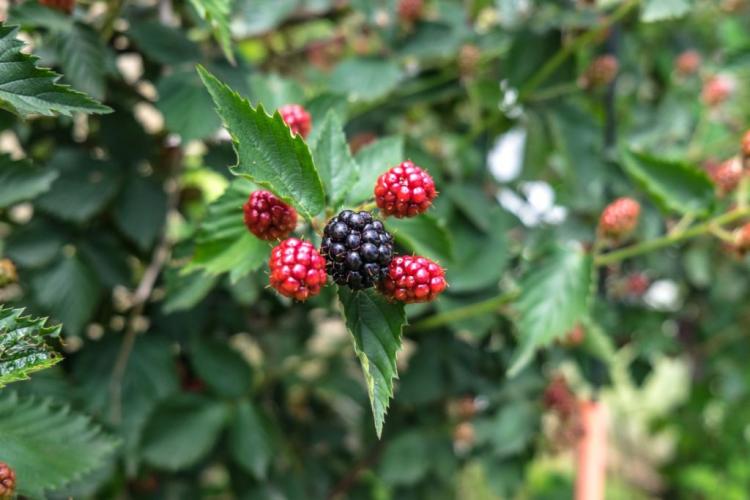
Plant blackberries in the pot
As already mentioned, blackberries can be grown well on walls or free-standing scaffolding and are therefore usually cultivated in the garden. Upright blackberry varieties, such as ‘Navaho’ or ‘Loch Ness’, also thrive in planters on the balcony. Special plant boxes with an integrated wooden (wicker) wall also offer an optimal climbing aid for creeping species. So the blackberry can serve wonderfully as a natural privacy screen or wind protection for the terrace or balcony. However, the planter should definitely offer sufficient volume for the pot culture to do justice to the vigor of the blackberry.
The following aspects must be taken into account in pot culture:
- Choose a sufficiently large planter
- Place this in a sheltered place
- Water regularly and provide fertilizer
- Remove overripe and moldy fruits
- Cut back and cut long blackberry tendrils
Properly care for blackberries after planting
The blackberry is fertilized in early spring (March) with a nutrient mixture suitable for berry bushes. To mimic the forest conditions of the blackberry’s natural environment, the soil around the plant is covered with a layer of mulch. This not only protects against dehydration but also improves the humus supply and suppresses weed growth. Since the mulch layer gradually breaks down, it should be renewed regularly.
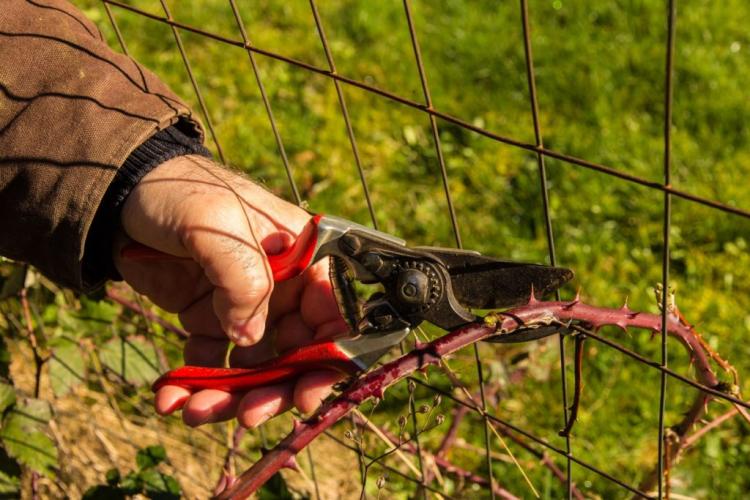
So that the blackberry bushes don’t get out of control, the annual pruning is best done in autumn or early spring. During the year, regular thinning and removal of stinging shoots also promote fruit development.
